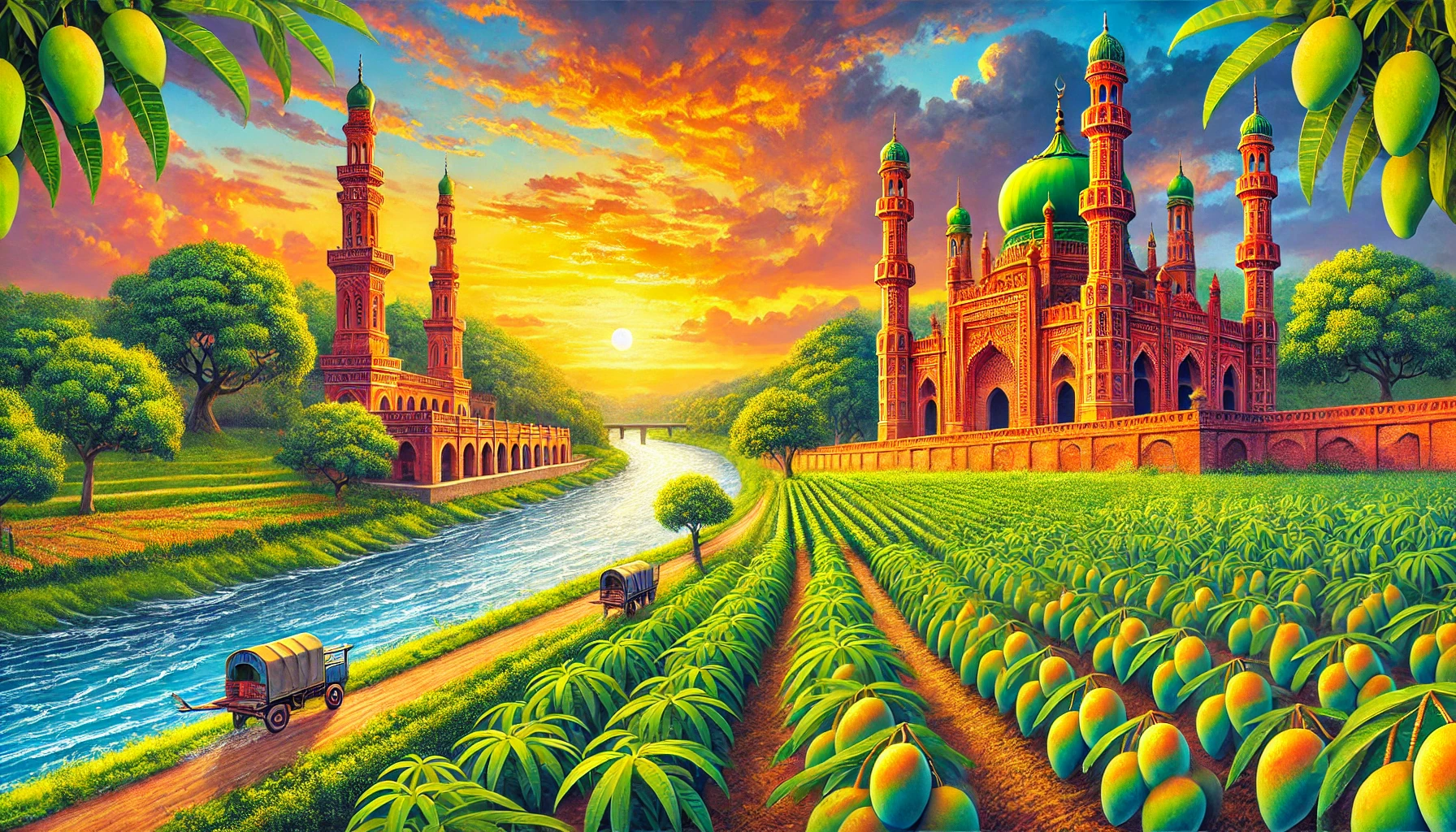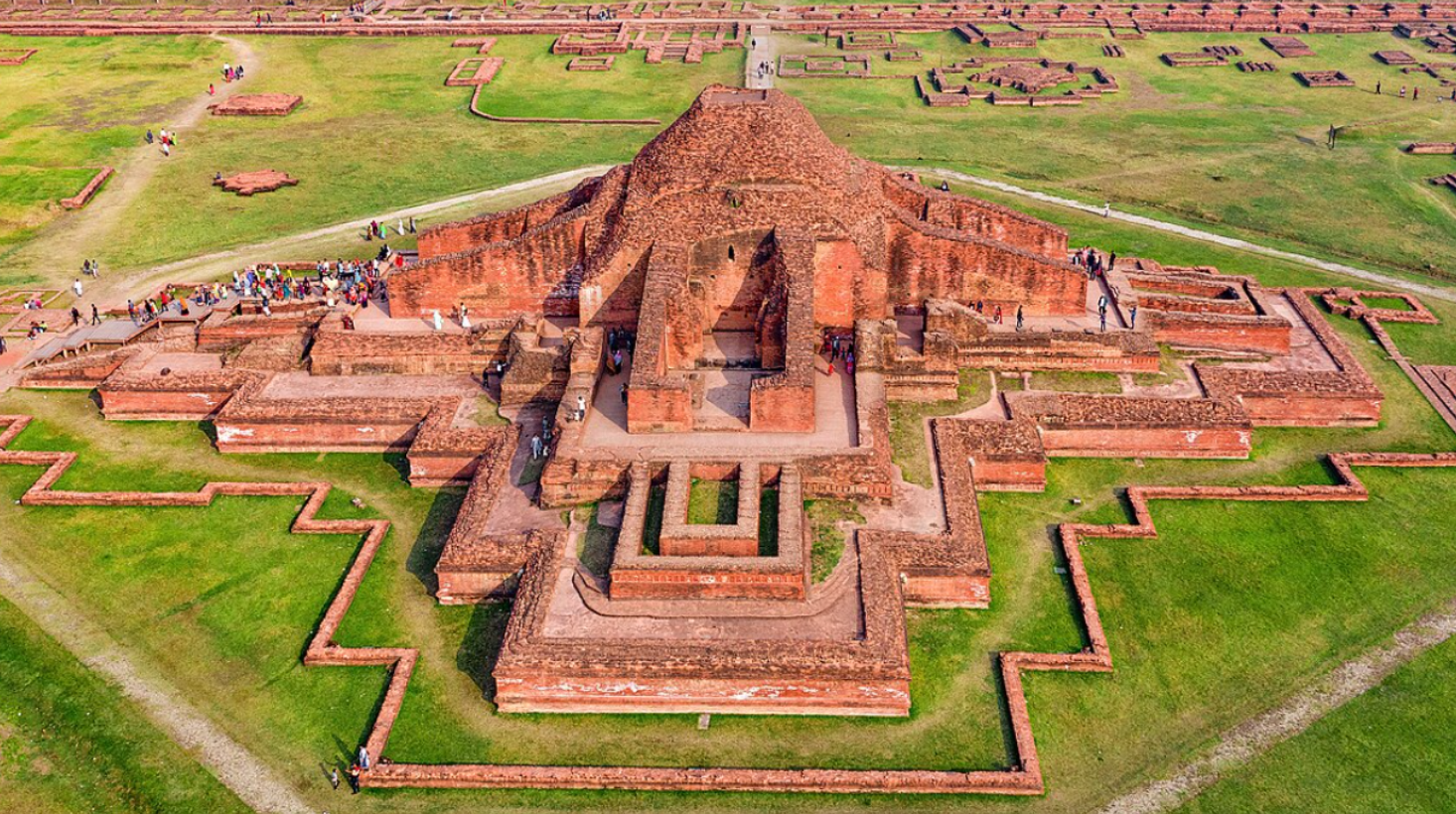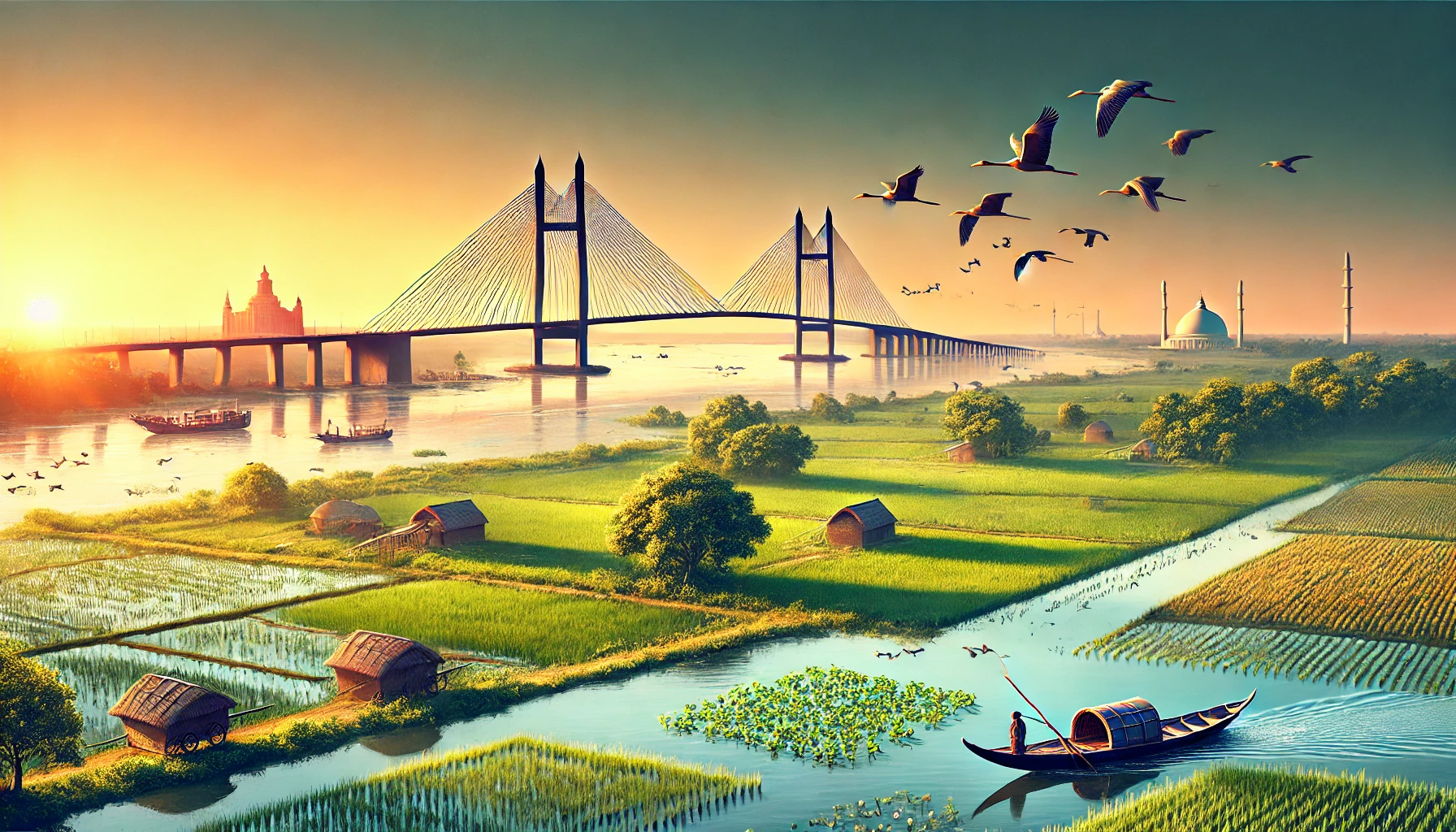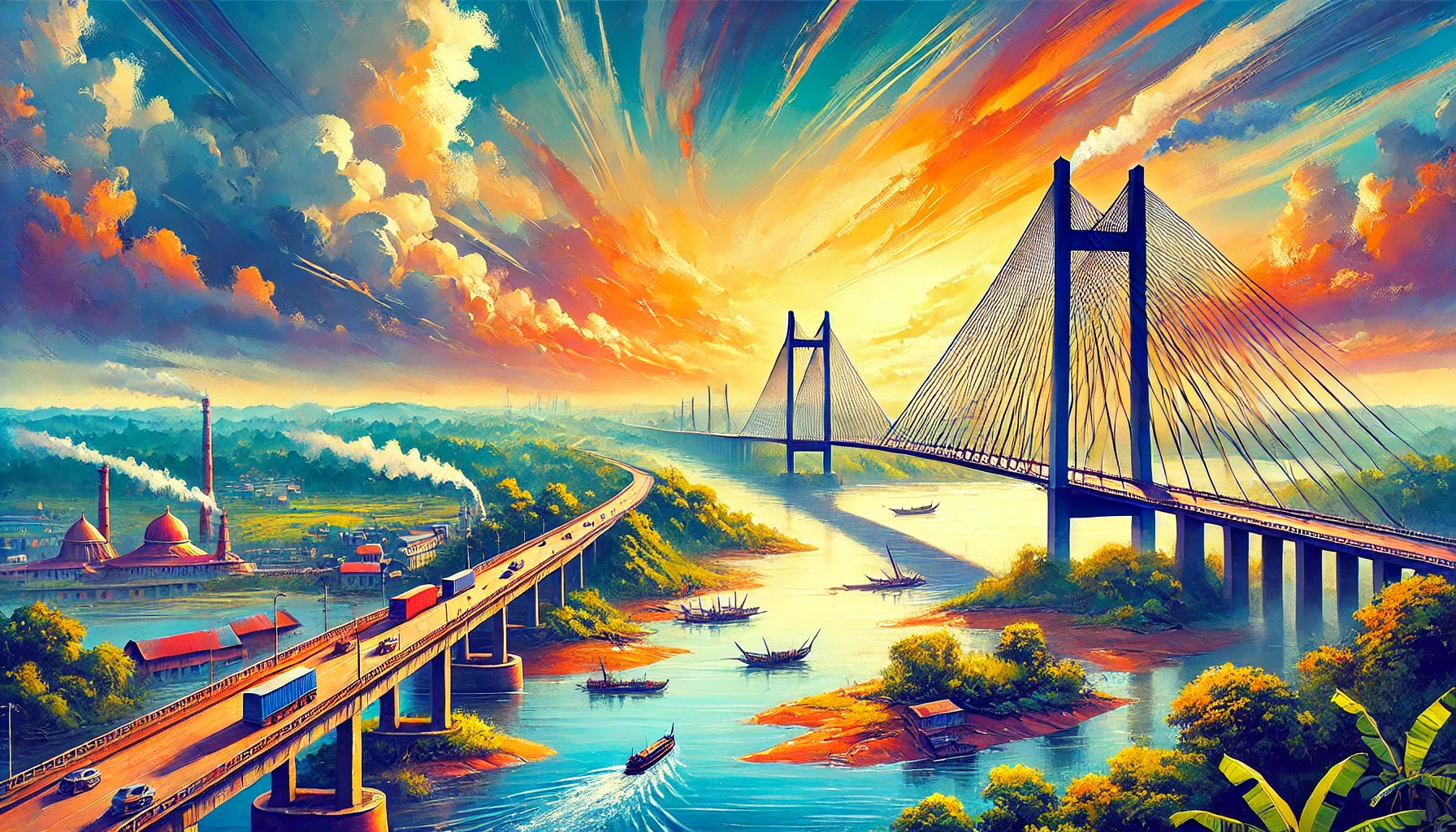Bogura, often referred to as the “Gateway to North Bengal,” is a district steeped in history, culture, and natural beauty. Located in the Rajshahi Division of Bangladesh, Bogura has earned its place as a significant center for trade, agriculture, and historical tourism. This district seamlessly combines its ancient heritage with modern progress, offering visitors and residents a unique glimpse into the past while embracing the future.
A Rich Historical Tapestry
Mahasthangarh: The Pride of Bogura
Mahasthangarh, one of the most ancient archaeological sites in Bangladesh, is a cornerstone of Bogura’s historical legacy. This site, believed to date back to at least the 3rd century BCE, was once the capital of the Pundra Kingdom. The ruins include the Citadel, Govinda Bhita Temple, and Jiyat Kunda, which continue to draw historians, archaeologists, and tourists.
Mahasthangarh also holds religious significance for Buddhists, Hindus, and Muslims alike. The discovery of inscriptions, coins, and sculptures has revealed the multicultural and multi-religious character of this ancient city.
Role in the Liberation War of 1971
During the Bangladesh Liberation War, Bogura played a vital role as a strategic location for freedom fighters. Many sites across the district stand as memorials to the sacrifices and bravery of those who fought for the country’s independence.
Cultural Significance
Folk Traditions and Festivals
Bogura has a vibrant cultural heritage that reflects its deep connection to Bengali traditions. Folk music, particularly Baul and Bhawaiya songs, is an integral part of the district’s identity. Local fairs and festivals, such as the Mahasthangarh Mela, showcase traditional crafts, music, and food, providing a festive atmosphere for both locals and tourists.
Art and Craft
Bogura is also known for its pottery, weaving, and other traditional crafts. The artisans of Dupchanchia and Sherpur are particularly renowned for their skill in creating exquisite handmade goods.
Economic and Agricultural Hub
Agricultural Prowess
Bogura’s economy is predominantly agrarian, with rice, potatoes, and vegetables as its primary crops. The district is known as the “Potato Capital of Bangladesh,” producing some of the highest-quality potatoes in the country. Fish farming is also a growing sector, with ponds and rivers contributing significantly to the local economy.
Industrial Growth
Bogura is not only an agricultural powerhouse but also an emerging industrial hub. It hosts several small and medium enterprises, particularly in food processing, textiles, and manufacturing. This dual economic focus ensures steady growth and development for the region.
Tourist Attractions In Bogura
Bogura is home to a wealth of attractions that cater to diverse interests:
1. Mahasthangarh Archaeological Site
This ancient city is a must-visit for history enthusiasts. Its ruins and artifacts provide a window into early urban civilization in Bengal.
2. Behular Basar Ghar
Linked to the famous Bengali folklore of Behula and Lakhindar, this site is an important cultural landmark.
3. Kherua Mosque
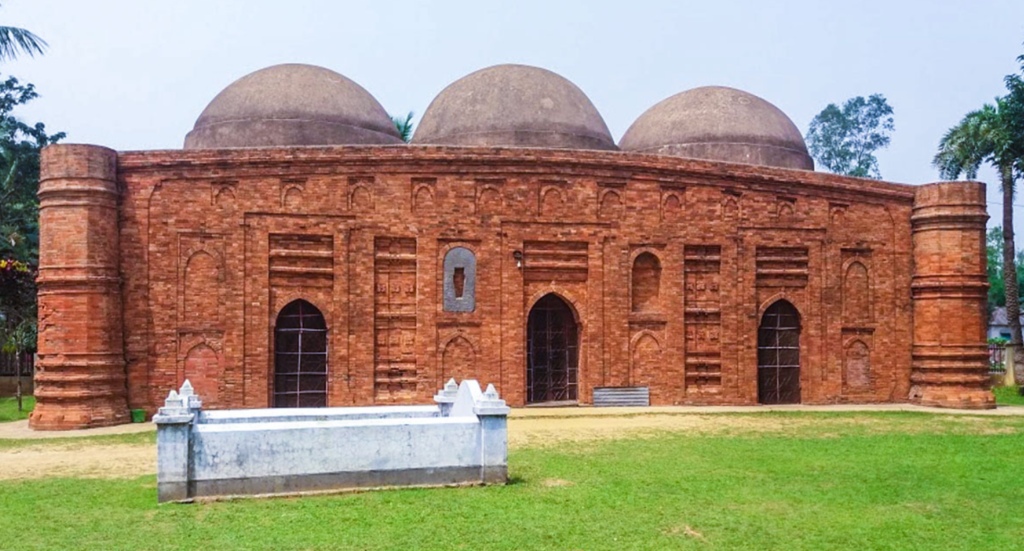
This historic mosque, dating back to the Sultanate period, is an architectural marvel.
4. Nawab Palace
A remnant of Bengal’s feudal era, the Nawab Palace in Bogura offers a glimpse into the opulent lifestyle of the region’s zamindars.
5. Kundar Bil Wetlands
A paradise for nature lovers, this wetland area is perfect for bird-watching, boating, and picnics.
6. Bogura Museum
Located near Mahasthangarh, this museum houses artifacts from the archaeological site, including coins, terracotta plaques, and inscriptions.
Upazilas of Bogura
Bogura is administratively divided into 12 upazilas, each with its own unique charm:
- Adamdighi: Known for archaeological sites and traditional crafts.
- Bogura Sadar: The district’s administrative and commercial hub.
- Dhunat: A serene upazila with lush greenery and vibrant agriculture.
- Dupchanchia: Famous for its pottery industry and cultural heritage.
- Gabtali: A peaceful area known for its rivers and rural charm.
- Kahaloo: A major center for rice milling and agribusiness.
- Nandigram: Offers scenic beauty and a peaceful rural lifestyle.
- Sariakandi: Home to the majestic Jamuna River and scenic wetlands.
- Shajahanpur: A growing area with a mix of urban and rural life.
- Sherpur: A bustling trade center with historical significance.
- Shibganj: Famous for its mango orchards and traditional sweets.
- Sonatala: Known for its tranquil environment and agricultural development.
Culinary Delights In Bogura
Bogura’s culinary scene is a treat for food lovers. Its yogurt, or “Bogurar Doi,” is a must-try delicacy that has gained national fame. Local sweets, such as “Khaja” and “Chamcham,” are also popular. The district’s cuisine features a variety of traditional Bengali dishes, including fish curries and pithas (rice cakes), often made with locally sourced ingredients.
Famous Personalities
Bogura has been the birthplace of many influential figures, including:
- Ziaur Rahman: Former President of Bangladesh and a significant figure in the country’s history.
- Begum Rokeya: A pioneer of women’s education and rights in Bengal.
- Shahidullah Kaiser: A renowned novelist and journalist.
How to Get There
Bogura is well-connected to other parts of Bangladesh via road and rail. Buses frequently run from Dhaka, Rajshahi, and Rangpur, making it an accessible destination for travelers. Private vehicles and rental cars are also popular options.
Conclusion
Bogura is a district where history, culture, and natural beauty converge. From the ancient ruins of Mahasthangarh to the vibrant cultural festivals and thriving agricultural economy, Bogura offers a multifaceted experience for visitors and locals alike. Whether you’re exploring its historical landmarks, enjoying its culinary treats, or soaking in its serene landscapes, Bogura promises an unforgettable journey through time and tradition.

